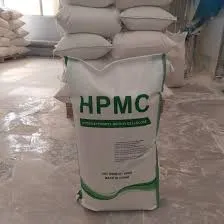
11월 . 17, 2024 15:39 Back to list
different grades of hpmc
Understanding Different Grades of HPMC Properties and Applications
Hydroxypropyl Methylcellulose (HPMC) is a water-soluble polymer derived from cellulose, widely used in various industries due to its versatility and unique properties. Depending on its grade, HPMC exhibits different characteristics that cater to specific applications, making it essential for manufacturers to choose the appropriate type for their projects. This article aims to explore the different grades of HPMC, their properties, and their applications.
What is HPMC?
HPMC is a chemically modified cellulose polymer, known for its gel-forming ability, viscosity, and film-forming properties. It is predominantly used in pharmaceuticals, food, cosmetics, and construction industries. HPMC is derived from cellulose through a multi-step chemical process that includes etherification, resulting in a compound that exhibits both hydrophilic and lipophilic properties, making it an excellent thickener, binder, and stabilizer.
Different Grades of HPMC
HPMC is classified into various grades based on several factors, including the degree of substitution (the number of hydroxypropyl and methyl groups present), viscosity, and gel strength
. The most common grades include1. Low-Viscosity HPMC This grade is characterized by a lower molecular weight and results in lower viscosity solutions. It is commonly used in applications where a thinner consistency is preferable, such as in spray formulations and some food products. Low-viscosity HPMC helps in improving the flow and spreadability of products without compromising the overall texture.
2. Medium-Viscosity HPMC Medium-viscosity grades find a balance between thickening and fluidity, making them widely used in various formulations. This grade is particularly useful in adhesive formulations, personal care products, and pharmaceuticals, where moderate viscosity is desired to enhance product stability and performance.
3. High-Viscosity HPMC High-viscosity HPMC is utilized when a thicker texture or stronger gel is required. This grade is commonly found in gel formulations, creams, and ointments, offering excellent binding and thickening properties. It is also popular in the construction industry as a thickener for mortars and adhesives.
different grades of hpmc

4. HPMC with High Gel Strength Some grades are specifically modified to exhibit higher gel strength, making them ideal for applications requiring more robust gel structures. This feature is particularly important in certain pharmaceutical and cosmetic formulations where a strong gel base is needed for product efficacy.
Properties of HPMC
The various grades of HPMC exhibit distinct physical and chemical properties, influenced by their degree of substitution and molecular weight. Some key properties include
- Solubility HPMC is soluble in cold water, forming a clear solution. However, the solubility typically increases with the degree of substitution and molecular weight. - Viscosity Control Different grades allow for precise control over viscosity, which is crucial for achieving desired textures in products. - Thermal Stability HPMC is stable over a wide range of temperatures, making it suitable for various processing conditions. - Biocompatibility HPMC is non-toxic and generally regarded as safe, particularly in pharmaceutical and food applications.
Applications of HPMC
The versatile nature of HPMC makes it suitable for a myriad of applications
- Pharmaceuticals It is often used as a binder in tablet formulations, a thickener in suspensions, and an emulsifier in creams and gels. - Food Industry HPMC acts as a stabilizer, thickener, and texturizer, enhancing the mouthfeel and quality of numerous food products, including sauces and dairy items. - Construction HPMC is vital in the production of dry mix mortars, tile adhesives, and plaster, providing improved workability and adhesion. - Personal Care Products In cosmetics, HPMC serves as a thickener and stabilizer in lotions, creams, and gels, contributing to the overall texture and stability of the products.
Conclusion
In summary, the different grades of HPMC play a crucial role in determining the suitability of this versatile polymer for various applications. Understanding the specific characteristics of each grade enables manufacturers to select the most appropriate type, ensuring optimal performance and quality in their products. Whether in pharmaceuticals, food, or construction, HPMC continues to be an indispensable material in modern formulations, driving innovation and enhancing product effectiveness across industries.
-
Versatile Hpmc Uses in Different Industries
NewsJun.19,2025
-
Redispersible Powder's Role in Enhancing Durability of Construction Products
NewsJun.19,2025
-
Hydroxyethyl Cellulose Applications Driving Green Industrial Processes
NewsJun.19,2025
-
Exploring Different Redispersible Polymer Powder
NewsJun.19,2025
-
Choosing the Right Mortar Bonding Agent
NewsJun.19,2025
-
Applications and Significance of China Hpmc in Modern Industries
NewsJun.19,2025







